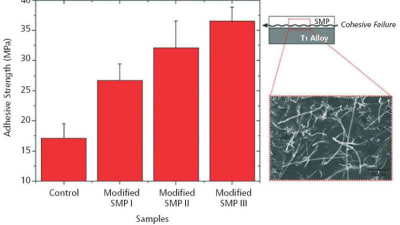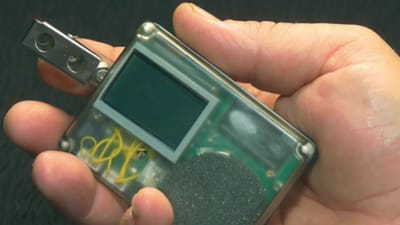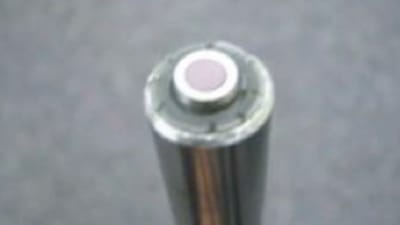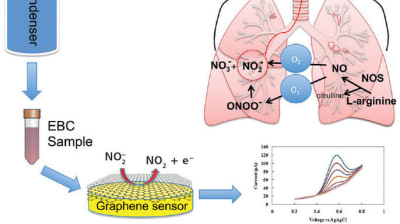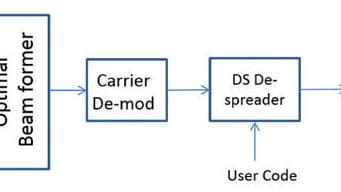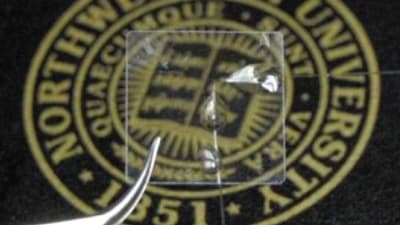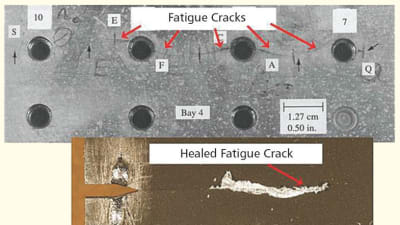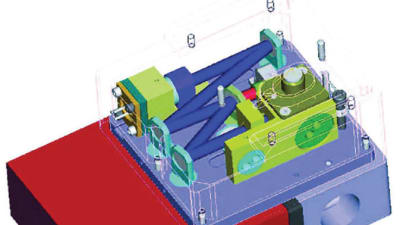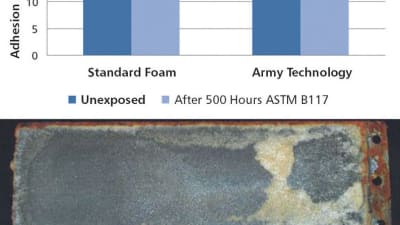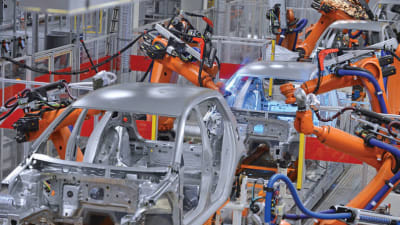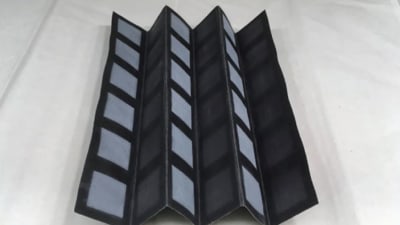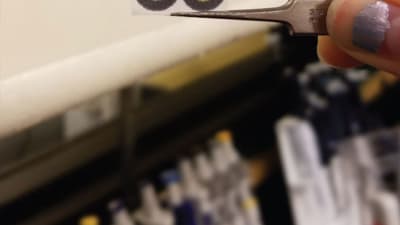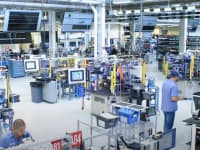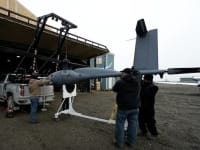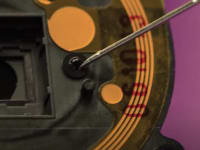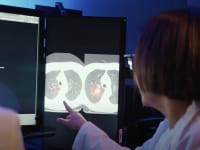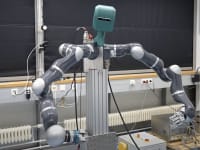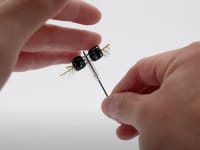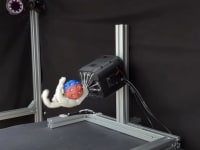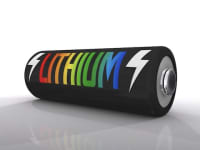61
169
-1
3150
30
Briefs: Materials
NASA Langley Research Center has developed technology to increase the adhesive strength between shape memory polymer composites (SMPs) and metal alloys. Shape...
Briefs: Communications
Many industrial and commercial plants, government and private research facilities, and industrial facilities perform potentially dangerous processes. Automated warning and alarm systems alert personnel to...
Briefs: Test & Measurement
Decoupled Ranging and Orientation Inversions Enable Linear and Fast Long-Range Non-Line-of-Sight Positioning
The wireless radio positioning or radiolocation problem is of great importance in society today. Existing radiolocation systems such as the Global Positioning System (GPS), Radio-Frequency Identification (RFID) systems, and Ultra Wide-Band...
Briefs: Aerospace
Calibration and Synchronization of Micro-Air-Vehicle Autopilots
Conventional calibration of an inertial measurement unit (IMU) through open-loop data collection includes typical flight simulator systems that provide processed stimuli to emulate real-life flight conditions. Other solutions involve testing inertial measurement devices on a multi-axis...
Briefs: Test & Measurement
Stennis Space Center has the need to measure the inner wall thickness of cryogenic storage tanks without entering the inner tank of the double-walled vessels. It was proposed that an ultrasonic probe be...
Briefs: Medical
Asthma, which causes inflammation of the airway and obstructs airflow, affects about 300 million people worldwide. Symptoms include coughing, wheezing, shortness...
Briefs: Unmanned Systems
Reliable, long-range acoustic communications (LRAC) is an enabling technology for numerous applications of manned and unmanned underwater systems. For example, with the capability of communicating at...
Briefs: Energy
Three-Dimensional Zinc Electrode Architectures for High-Performance Batteries
Zinc-based batteries offer a safe, inexpensive alternative to fire-prone lithium-based batteries, yet have been historically limited by poor rechargeability. A 3D zinc (Zn) “sponge” electrode architecture was developed comprising interpenetrating networks of Zn...
Briefs: Photonics/Optics
The Micro-ring resonator detector can determine the speed of blood flow and the oxygen metabolic rate at the back of the eye. This information could help diagnose such common and debilitating...
Briefs: Communications
A Smooth-Walled Feedhorn with Sub-30-dB Cross-Polarization Over a 30-Percent Bandwidth
The focus of this research was the design, optimization, and measurement of a monotonically profiled, smooth-walled scalar feedhorn with a diffraction-limited ~14° FWHM (full width at half maximum). It is an easier-to-manufacture, smooth-walled feed that...
Briefs: Materials
NASA’s Langley Research Center has developed an innovative coating to heal cracks in metal components, such as in aircraft and bridges. Currently, the coating is used for in-laboratory repairs of...
Briefs: Test & Measurement
Devices for manipulating fluids on the microscale have been developed to store, hold, and manipulate small amounts of fluids, and have been applied to the detection of analytes in sample fluids....
Briefs: Communications
One of the limits of today's virtual reality (VR) headsets is that they must be tethered to computers in order to process data well enough to deliver high-resolution visuals. Wearing an HDMI cable reduces...
Briefs: Energy
Innovators at NASA’s Glenn Research Center have developed two novel technologies that make Stirling engines more efficient and less costly. First, Glenn’s thermoacoustic power converter uses sound to turn heat into...
Briefs: Aerospace
NASA Langley Research Center has developed two new implementations of acoustic liners for aircraft noise reduction whereby curved channels within tight spaces can be outfitted to provide noise reduction....
Briefs: Materials
Surfaces such as metal and other corrodible surfaces are often exposed to extreme weathering, temperatures, moisture, impurities, and otherwise damaging external forces that accelerate corrosion....
Briefs: Materials
When the Deepwater Horizon drilling pipe blew out seven years ago, beginning the worst oil spill in U.S. history, those in charge of the recovery discovered that the millions of gallons of...
Briefs: Aerospace
Some unmanned aircraft designs attempt to combine the vertical takeoff and landing (VTOL) and hover capabilities of a helicopter with the increased speed and range capabilities of fixed-wing airplanes. Stop-rotor...
Briefs: Aerospace
NASA Langley Research Center, in collaboration with Boeing and Lockheed Martin, has developed a new external acoustic liner for aircraft noise reduction. While the acoustic liner can be placed on any...
Briefs: Energy
Technology that embeds silicon nanoparticles into efficient luminescent solar concentrators (LSCs) has been developed. The LSCs are the key element of windows that can efficiently collect...
Briefs: Aerospace
NASA's Langley Research Center has developed an in-flight global nonlinear aerodynamics modeling and simulation system. The technology replaces the normal labor-intensive iterative...
Briefs: Materials
Aqueous Solution Dispersement of Carbon Nanotubes
NASA’s Langley Research Center researchers have developed a novel method to disperse carbon nanotubes in aqueous solutions using chemical buffers. By avoiding the common use of surfactants to achieve dispersion, the researchers have provided a means to maintain biocompatibility of the carbon...
Briefs: Aerospace
Aircraft Deicing Decision Support Tool (DST)
Smooth and efficient operation of the National Airspace System depends on timely execution of flight-related events. Weather can severely disrupt the carefully planned flight schedules at a hub airport and impact travelers through out the country. In particular, a snowstorm may cause substantial...
Briefs: Medical
Unfortunately, blood pressure (BP) measurements currently require the use of a cuff that temporarily stops blood flow. A wearable BP “watch” using today’s...
Briefs: Medical
Digital-to-Analog Transformation and Reconstruction of ECG Data
The innovators at NASA Johnson Space Center have developed a new method and device for specialized digital-to-analog conversion (DAC) and reconstruction of multichannel electrocardiograms (ECGs), including 12-lead ECGs. Current devices do not have the functionality that allows for the...
Briefs: Test & Measurement
The dependability of energy storage devices — particularly batteries — is becoming increasingly important to consumers, industry, and the military. As battery technology becomes more complex and users' expectations...
Briefs: Test & Measurement
When performing machine tool setup and maintenance operations, it is frequently necessary to use a position transducer to “sweep” a surface and establish...
Briefs: Energy
A bacteria-powered battery that can power disposable electronics has been created on a single sheet of paper. The manufacturing technique reduces fabrication time and cost, and the...
Briefs: Test & Measurement
Borrowing concepts from medical diagnostic devices, researchers have created a simple, inexpensive set of handheld tests that can detect the presence of many water- or food-borne...
Top Stories
Blog: Manufacturing & Prototyping
2025 Holiday Gift Guide for Engineers: Tech, Tools, and Gadgets
INSIDER: Research Lab
Scientists Create Superconducting Semiconductor Material
Blog: Software
Quiz: Materials
Blog: Aerospace
Tech Briefs Wrapped 2025: Top 10 Technology Stories
Blog: Manufacturing & Prototyping
Webcasts
 Upcoming Webinars: AR/AI
Upcoming Webinars: AR/AI
The Real Impact of AR and AI in the Industrial Equipment Industry
 Upcoming Webinars: Motion Control
Upcoming Webinars: Motion Control
Next-Generation Linear and Rotary Stages: When Ultra Precision...
 Upcoming Webinars: Energy
Upcoming Webinars: Energy
Hydrogen Engines Are Heating Up for Heavy Duty
 Podcasts: Medical
Podcasts: Medical
How Wearables Are Enhancing Smart Drug Delivery
 Podcasts: Power
Podcasts: Power
SAE Automotive Podcast: Solid-State Batteries


